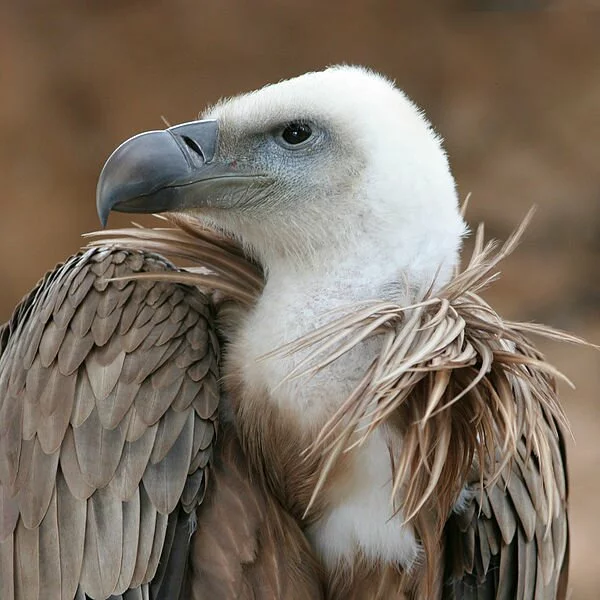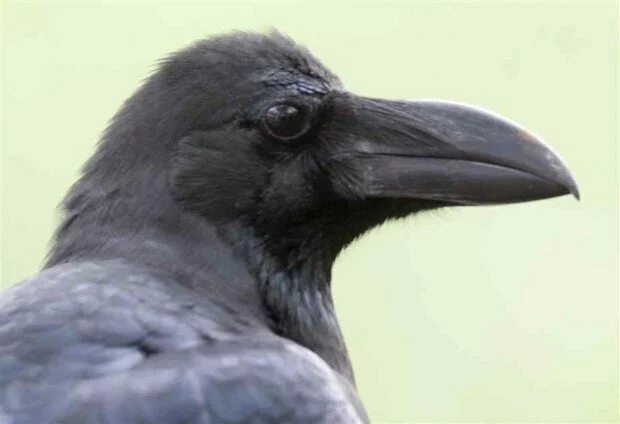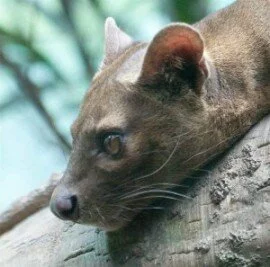Vultures: The Birds of the Dead
Seen by many people as symbols of doom and death as well as unappealing and disgusting creatures, the vultures are indeed in a tough spot when it comes to capturing the awe and wonder of humans. This is probably not much of a surprise, considering the myriad of unusual and unattractive adaptations that these birds possess in order to assist them in their survival. As creatures specializing in the scavenging of corpses (in most species, at least), vultures are designed to consume and break down diseased and rotting flesh. Though other animals will scavenge carcasses whenever possible, including some of nature’s most intimidating predators, vultures are among the most efficient in this dirty job. Furthermore, when seen from are more understanding perspective, these impressive birds are not as unsightly as many think. In fact, past cultures possessed beliefs which honored vultures. Vultures are probably more deserving of respect than disgust, as their design and adaptations have allowed them to become some of nature’s most important and necessary creatures. All in all, these birds are not only more impressive then we give them credit for, they are full of surprises.
The term “vulture” is actually used to describe two distantly related groups of birds, the Cathartidae and Aegypiinae families. Vultures of the Cathartidae family represent New World vultures (those present in North and South America) while those of the family Augypiinae are Old World vultures (present in Europe, Africa, and Asia). New World vultures are more closely related to storks and ibises according to more recent research, while Old World vultures are more closely related to raptors such as eagles and hawks.[1] Despite a continuing controversy concerning the classification of New World vultures and their relation to the Old World vultures, there exist several morphological and behavioral differences between the two families which support the separation of the two. For instance, New World vultures possess weak, chicken-like feet which allow them to run effectively but are not very useful for grasping. They are not capable of lifting or carrying food with their feet and can only step on their meal in order to hold it in place as they eat. Furthermore, they possess rather thin and weak beaks. Old World vultures are possess a very different design in these areas; not only do they have powerful feet like the clutching talons of their raptorial relatives, they also possess noticeably stronger beaks than their New World counterparts. The Cathartidae and Aegypiinae families are believed by many scientists today to be little more than distant relatives which simply happen to possess similar adaptations for a similar lifestyle, such as bare, featherless heads which assist them in their rather messy meals.[2]
Despite their modern reputation as repulsive and unattractive creatures, some ancient cultures admired and respected vultures. Ancient Egyptians commonly connected the griffon vulture (Gyps fulvus) with the goddess Nekhbet.[3] This ancient Egyptian deity was a patron of Upper Egypt and was believed to be a guardian of mothers and children (Nekhbet would also be venerated later on as a goddess of birth as well).[4] Illustrations of griffon vultures are also found in early Egyptian paintings and drawings and even had a place on the pharaoh’s crown along with the cobra. In Native American culture, the California condor (Gymnogyps californianus) was a significant creature in mythology and burial rituals.[5] It’s clear that these cultures looked past the eating habits of these birds, seeing something extraordinary in their nature.
However, despite the fact that these creatures are not as dirty as some may think, their design still centers around one thing: feasting on dead bodies (often in rotting conditions). Vultures possess acute eyesight, allowing them to scan their environment from far distances as they soar through the sky. Some vultures, such as the turkey vulture (Cathartes aura) also possess a highly developed sense of smell, which grants them an advantage against other vulture species, allowing them to locate nearby carrion more effectively.[6] Vultures will also keep an eye on other members on other vultures as they search for food. Should one bird notice other members of its kind suddenly descending to the ground, it will follow them to that area in hopes of taking part in a possible meal.[7] Because of this, it is not rare to find several vultures feasting on the same carcass. Using their feet to hold their hold down their food, the birds gorge themselves on the delicious rotten flesh, using their sharp beaks to slice through their meal and rip out consumable chunks. Many vultures possess bald heads (or heads with very little plumage). Though this is considered one of their many unattractive features by people, this is actually a brilliant physiological property which allows the hungry birds to dig deep into all sorts of decaying carcasses and come out relatively clean. In other birds, the presence of feathers on their heads would only serve to provide bacteria with a suitable habitat. Instead, vultures are able to rely on carrion as the bulk of their diet while carrying out their lives disease-free. Even if some bacteria manages to cling onto what little fuzz exists on a vulture’s head, the vultures are still not in danger; these birds are often seen perched in the heat of the sun, resulting in what little bacteria exists on them being scorched off permanently.[8] Although vultures will happily consume carrion that would be too rotten and dangerous for other carnivores to eat, how are these creatures capable of surviving this normally fatal diet? The answer lies in their specially designed digestive system; vultures possess special chemicals in their stomachs that kill the dangerous bacteria present in their food.[9] Thus, the birds are free to feast on as much carrion as they desire. It should be noted that, though vultures often share meals, there is a definite pecking order; the largest vultures are always the first to eat, while smaller individuals must patiently wait their turn.[10]
Although carrion makes the majority of most vultures’ diets, the birds do consume other food items. In fact, some vultures are also known for their clever methods of attaining other meals. For instance, the Egyptian vulture (Neophron percnopterus) is renowned for its excellent use of tools when it comes to cracking open egg shells. This particular vulture strikes abandoned ostrich eggs repeatedly with stones, then uses its beak to enlarge the hole on the egg so that it can reach the nutritious yolk inside. Probably the most fascinating part of this behavior is the fact that it is not instinctive; this intelligent species learns this strategy from other vultures.[11] The bearded vulture (Glypaetus barbatus), another clever species, makes the most out of its meal by carrying bones up into the air and dropping them onto favored rocky areas to break them open. Once the bones are smashed open, the bird descends and consumes the marrow inside.[12] The black vulture (Coragyps atratus) can be more aggressive in its search for food, as it is known to attack a fair variety of animals, including small mammals, baby herons, domestic ducks, skunks, opossums, smaller birds, and even newborn calves.[13] Other vulture species will also occasionally kill animals for food.[14]
It is not uncommon for other, much larger animals to locate a carcass being consumed by vultures. The problem for the vultures is that sometimes they consume so much food, they have difficult taking flight. This can be a serious problem when a large predator is approaching the same carcass, but one vulture species, the turkey vulture (mentioned previously), possesses a solution to this problem: vomiting. Indeed, the birds regurgitate their meal in the form of a lump of meat that can be fresh (if the vulture just ate) or semi-digested and foul smelling. This allows the vulture to offload some weight and take flight before the predator has a chance to strike at it. Although it is believed that this behavior is supposed to deter the aggressor, it often does not. In fact, the predator may even feed on the regurgitated food, with the vulture then seizing its chance to flee.[15]
The turkey vulture also possesses yet another unusual behavior in that it is known to urinate directly onto its legs. Now there are two reasons to this bird’s madness. The first is that this process, known as urohydrosis, allows the vulture to cool down when temperatures become too hot for it to bear. The vulture cannot sweat like humans can, so this is important for the animal. In addition, the vulture’s urine contains powerful acids from the creature’s digestive system which may kill any bacteria that remain on its legs from stepping on its meals.[16] Once again, vultures prove to be odd yet brilliant animals when it comes to survival.
Some Old World and New World vultures are endangered. Human influences on the environment appear to be the cause for the rapid declines in vulture populations. For instance, in India and certain parts of South Asia, a great number of vultures have died due to an anti-inflammatory drug used by veterinarians and ranchers to help livestock. The vultures scavenged on deceased livestock that had been treated by the drug, resulting in the birds becoming sick and dying. Fortunately, breeding programs as well as education and awareness programs have been started for endangered vulture species by organizations such as The Peregrine Fund and Vulture Rescue.[17] Keeping these creatures alive is vital to the health of the environment due to their important roles as scavengers.
Vultures are not the most renowned of creatures. One might also say that they are not among the most beautiful of animals. However, those who look at these creatures from a survival and design standpoint will find an animal which simply does not get the respect it truly deserves. Vultures are strong creatures, surviving on a diet that would kill most other animals. Though they may dwell among the dead, these misunderstood birds are responsible for the survival of the ecosystems they are a part of, for without them, disease would eventually spread without restrictions. The vulture, in all of its oddity, uniqueness, and cunning, is among the most amazing animals on earth.
[1] “The Vultures of the World.” www.vultures.homestead.com. http://vultures.homestead.com/about.html (accessed November 22, 2011).
[2] “Turkey Vulture Facts, Maps, and Statistics.” www.vulturesociety.homestead.com. http://vulturesociety.homestead.com/TVFacts.html (accessed November 22, 2011).
[3] “Vulture .” www.sandiegozoo.org. http://sandiegozoo.org/animalbytes/t-vulture.html (accessed November 22, 2011).
[4] Seawright, Caroline. “Nekhbet, Goddess of Upper Egypt, Childbirth and Protector of Pharaoh.” www.thekeep.org. http://www.thekeep.org/~kunoichi/kunoichi/themestream/nekhbet.html (accessed November 22, 2011).
[5] “Vulture .” www.sandiegozoo.org. http://sandiegozoo.org/animalbytes/t-vulture.html (accessed November 22, 2011).
[6] “Vulture.” www.animal.discovery.com. http://animal.discovery.com/birds/vulture/ (accessed November 22, 2011).
[7] “Turkey Vulture Facts, Maps, and Statistics.” www.vulturesociety.homestead.com. http://vulturesociety.homestead.com/TVFacts.html (accessed November 22, 2011).
[8] “The Vultures of the World.” www.vultures.homestead.com. http://vultures.homestead.com/about.html (accessed November 22, 2011).
[9] Bucklinger, Pamela. “Vultures .” www.nwf.org. http://www.nwf.org/Kids/Ranger-Rick/Animals/Birds/Vultures.aspx (accessed November 22, 2011).
[10] “Vulture .” www.sandiegozoo.org. http://sandiegozoo.org/animalbytes/t-vulture.html (accessed November 22, 2011).
[11] “Egyptian Vulture.” www.vultures.homestead.com. http://vultures.homestead.com/Egyptian.html (accessed November 22, 2011).
[12] “Vulture .” www.sandiegozoo.org. http://sandiegozoo.org/animalbytes/t-vulture.html (accessed November 22, 2011).
[13] Elliott, Glen. “Coragyps atratus.” www.animaldiversity.ummz.umich.edu. http://animaldiversity.ummz.umich.edu/site/accounts/information/Coragyps_atratus.html (accessed November 22, 2011).
[14] Khatiwoda, Arya. “Gyps bengalensis.” www.animaldiversity.ummz.umich.edu. http://animaldiversity.ummz.umich.edu/site/accounts/information/Gyps_bengalensis.html (accessed November 22, 2011).
[15] “Turkey Vulture Facts, Maps, and Statistics.” www.vulturesociety.homestead.com. http://vulturesociety.homestead.com/TVFacts.html (accessed November 22, 2011).
[16] Ibid
[17] “Vulture .” www.sandiegozoo.org. http://sandiegozoo.org/animalbytes/t-vulture.html (accessed November 22, 2011).


